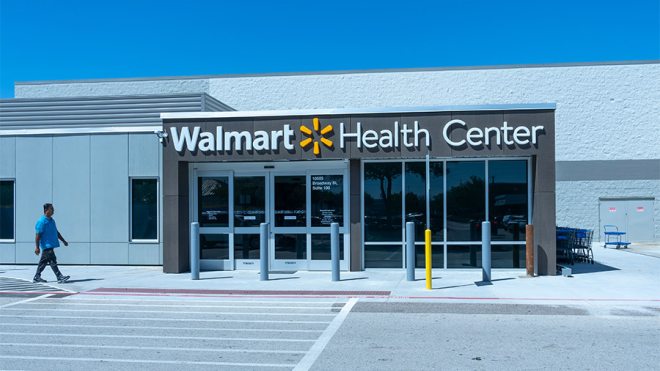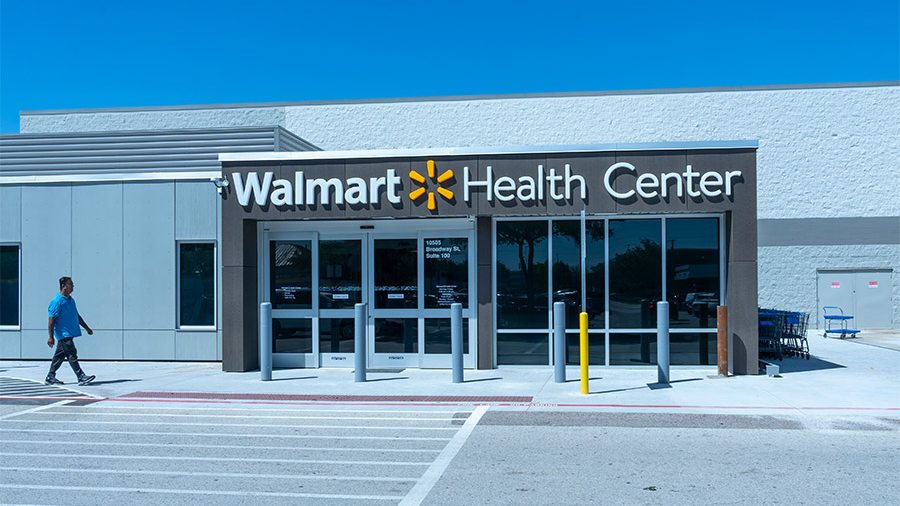The Department of Justice, Department of Health and Human Services, and Federal Trade Commission recently issued a Request for Information on Consolidation in Healthcare Markets. In support of U.S. hospitals and healthcare, we submitted the following comments on May 6, 2024.
Kaufman, Hall & Associates, LLC (Kaufman Hall) is a healthcare consulting firm that supports the strategic, financial, and operational needs of hospitals and health systems of all sizes across the United States. Kaufman Hall also collects and publishes data 1) related to hospital and health system financial performance in the monthly National Hospital Flash Report and quarterly Physician Flash Report (based on data provided from Syntellis) and 2) on hospital and health system merger and acquisition activity in quarterly M&A Activity Reports.
We have several concerns regarding the assumptions and methodologies underlying the Request for Information (RFI) on Consolidation in Health Care Markets and appreciate the opportunity to respond to the RFI.
- The regulatory agencies may be impeding a necessary reorganization of hospitals and health systems.
Hospitals and health systems in the United States are recovering from some of the most difficult operating conditions in recent history. As noted in the Medicare Payment Advisory Commission’s (MedPAC) March 2024 Report to the Congress, in 2022 the aggregate all-payer operating margin for the nation’s 3,160 Inpatient Prospective Payment System (IPPS) hospitals declined to 2.7%, the lowest level since 2008. Excluding federal relief funds for the coronavirus pandemic, that operating margin declined even more, to 1.9%. A significant driver of this decline was a mismatch between operating revenue growth and operating expense growth. Excluding federal relief funds, operating revenue grew by only 1% in 2022 while operating expenses grew by 8% (with relief funds included, operating revenue growth of 2% still lagged far behind operating expense growth).
Data from the Kaufman Hall National Hospital Flash Report shows that while operating conditions improved in 2023, the median operating margin at the end of 2023 stood just around 2%. In a deeper analysis of the data, we found that 40% of U.S. hospitals were still losing money on operations as of February 2024.[1] As a result of these financial pressures, the ratio of rating downgrades to rating upgrades for not-for-profit hospitals and health systems was 3-to-1 at the three major credit rating agencies (Fitch, Moody’s, and S&P Global) for 2023.
The extent to which financial pressures are driving the need for consolidation was demonstrated in the data on hospital and health system mergers and acquisitions for 2023. Twenty-eight percent of the M&A transactions announced in 2023 involved a financially distressed hospital or health system, nearly double the percentage of transactions (15%) involving a financially distressed organization in 2022.[2]
Competition, as the RFI asserts, may be a means of lowering costs, fostering high-quality care, and encouraging innovation, but that presupposes a market where competition is feasible. The idea that two or more competing hospitals can be maintained in most of the medium- and small-sized markets around the country is not supported by current organizational results. In many of these markets, population growth is stagnant and excess capacity exists. Across the country, inpatient utilization continues its downward trend. Ignoring these factors and prohibiting consolidation in markets that cannot sustain hospital competition simply sustains an inefficient healthcare system. And to the extent that one or more of the competing hospitals is on a financially unsustainable path, unable to make needed investments in facilities, talent, and technologies that improve patient care, prohibiting consolidation could be putting patient outcomes and safety at risk.[3]
Allowing smaller hospitals to merge or partner with larger health systems helps to stabilize them financially and enables them to access the richer resources and capabilities of the larger system, improving the quality and the value of the care they can deliver to their patients and communities. If a merger or other partnership structure—including the minority investment partnership structures called out in the RFI—is blocked, improvement is unlikely to happen at the smaller hospital. Instead, it is left with inadequate resources and the risk of deteriorating services or potential closure.
Larger health systems with more resources to invest in innovation also are creating intellectual capital that could be shared with other hospitals and health systems. Our healthcare policy should be focused on incentives that would make the sharing of that intellectual capital easier, not more difficult, to achieve.
- The regulatory agencies’ current approach to measuring competition does not reflect the current competitive realities of the healthcare marketplace.
The regulatory agencies continue to focus their analysis within healthcare verticals. This approach is illustrated in the RFI, which has separate questions for three separate verticals of private equity or other alternative asset managers, health systems, and private payers. In reality, an increasing amount of competitive activity is occurring across these verticals.
Within the health system vertical, the agencies remain focused on share of the inpatient care market. Maintaining a focus on competition for inpatient care, however, is not necessarily maintaining the long-term viability of hospitals and health systems. Inpatient care is a dwindling percentage of hospitals’ and health systems’ business as care continues to migrate to highly competitive outpatient settings. American Hospital Association (AHA) data shows that, as of 2020, the average percentage of revenues at U.S. community hospitals was almost evenly split between inpatient and outpatient services.[4] Outpatient revenue as a share of overall gross revenue has continued to grow, increasing by 6.3% for 2023 versus 2021.[5] As noted earlier in this letter, inpatient care is a segment that is struggling with economic sustainability, with operating expenses continuing to outpace operating revenue. As a result, industry disruptors have limited interest in entering the market for inpatient care. Interest is strong, however, in the highly competitive market for outpatient ambulatory care, where health systems must compete for an increasing percentage of their business. In this segment, few of the largest ambulatory surgery center companies are owned by health systems.[6]
The regulatory agencies (and academic economists) also continue to focus on price. In reality, according to AHA data, more than 65% of a typical hospital’s patient volume is paid by Medicare or Medicaid, and the rates paid by these government payers are unaffected by a merger or partnership.[7] These rates are consistently below the costs of providing services. MedPAC’s March 2024 Report to the Congress estimates that in 2024, IPPS hospitals’ aggregate fee-for-service Medicare margin across service lines will be approximately negative 13%. Even among MedPAC’s group of “relatively efficient” hospitals, the median margin will be negative 3%.
With respect to private payers, analyses of price increases paid to acquired organizations fail to question whether the prices paid prior to the merger were financially sustainable. The question, in other words, should not be whether prices have increased, but whether the prices paid are sufficient to support the services provided and the viability of the organizations that are committed to providing inpatient care. It is also worth noting that prices are negotiated between the hospital and the payer; they are not dictated by the hospital. And once negotiated, those prices remain relatively inflexible for the duration of the contract. Hospitals do not have pricing flexibility to accommodate for events like the sharp escalation in expenses seen in the past few years.
A focus on price also does not account for actual operating conditions and whether a merger can, for example, enable a smaller organization to sustain, improve, or add critical services, or avoid closure—operational improvements of clear value to patients and the community. In a report prepared for the AHA,[8] Kaufman Hall found that almost 4 in 10 of hospitals acquired between 2015 and 2019 added one or more services following the acquisition. The same report found that 80% of acquired hospitals that had declared bankruptcy before the acquisition—a sign of imminent closure—were saved from bankruptcy and were able to continue serving their communities. These improvements in services—or avoidance of a hospital closure—also are important aspects of the quality and value of care to patients and communities produced by mergers that are often overlooked by academic studies of mergers’ impacts.
- Hospitals and health systems are at an increasing competitive disadvantage within the larger healthcare ecosystem.
In the larger healthcare ecosystem, health systems are dwarfed by the resources of other entities with which they now compete in all areas except for inpatient care. The largest for-profit health system had annual revenues of approximately $65 billion for 2023,[9] and the largest not-for-profit health systems had annual revenues of approximately $28 billion to $35 billion.[10] In comparison, UnitedHealth Group had 2023 annual revenues of $372 billion,[11] CVS Health had annual revenues of $358 billion,[12] and Amazon had annual revenues of $575 billion.[13] A nuanced—and realistic—analysis of the competitive dynamic within this larger ecosystem highlights the growing competitive disadvantage health systems have vis-à-vis their non-health-system competitors for a growing percentage of their services.
Physician networks are a good example of the new competitive dynamic in healthcare. The largest physician network in the country—with approximately 90,000 physicians—is now employed by or affiliated with Optum, part of UnitedHealth Group.[14] In comparison, with the exception of Kaiser Permanente (an integrated health plan and healthcare delivery system), the largest health system physician networks have approximately 15,000 physicians.
As part of their mission, health systems employ or affiliate with physicians across a full range of services to ensure that their communities have access to all their healthcare needs. These include low or negative margin services such as emergency care, behavioral health, hospice and palliative care, and obstetrics. As a result, according to Kaufman Hall Physician Flash Report data, the median subsidy (or loss) per physician employed by a health system was more than $290,000 at the end of 2023.[15] Hospitals and health systems, in other words, are employing physicians to serve their communities’ needs; they are not generating large margins through physician employment. And they are competing for physicians—especially in higher margin services—against some very well-funded organizations that do not share the same mission to provide a full range of healthcare services.
Conclusion
For 20 years, the regulatory agencies have taken a more aggressive stance toward hospital and health system mergers.[16] It is time to ask what this regulatory framework has been able to achieve. Have we created a more effective health system? Or do we have a system where a significant percentage of organizations are struggling financially but may be foreclosed from seeking a partner that could restore their financial stability? Ultimately, what does all this mean for the future of healthcare and the ability of hospitals and health systems to meet the legitimate demands of the American public?
Thank you for the opportunity to comment on these issues.
Sincerely,
Kaufman Hall
[1] Kenneth Kaufman and Erik Swanson, “The Numbers Behind the Numbers,” Kaufman Hall, Feb. 21, 2024. https://www.kaufmanhall.com/insights/thoughts-ken-kaufman/numbers-behind-national-hospital-flash-report
[2] Kaufman Hall, Hospital & Health System M&A in Review: Financial Pressures Emerge as Key Driver in 2023, January 2024. https://www.kaufmanhall.com/insights/research-report/2023-hospital-and-health-system-ma-review. Financially distressed transactions are those in which a party has cited, or publicly available information has enabled Kaufman Hall to infer, an element of financial distress as a transaction driver.
[3] Kaufman Hall made these points in detail in a June 4, 2019, letter to the Federal Trade Commission in response to its Certificates of Public Advantage (COPA) Assessment, Project No. P181200.
[4] American Hospital Association, Trendwatch Chartbook 2021: Trends Affecting Hospitals and Health Systems
[5] Syntellis, “Demand for Outpatient Care Escalates Going into 2024,” n.d., retrieved May 6, 2024. https://www.syntellis.com/blog/demand-outpatient-care-escalates-heading-2024
[6] Patsy Newitt, “The 10 Largest ASC Chains by Number of Centers,” Becker’s ASC Review, June 13, 2023. https://www.beckersasc.com/asc-transactions-and-valuation-issues/the-10-largest-asc-chains-by-number-of-centers.html
[7]American Hospital Association, Fact Sheet: Hospital Costs Explained, updated May 25, 2021. https://www.aha.org/fact-sheets/2020-09-23-fact-sheet-hospital-costs-explained
[8] Kaufman Hall, Partners, Mergers, and Acquisitions Can Provide Benefits to Certain Hospitals and Communities, October 2021.
[9] HCA Healthcare, “HCA Healthcare Reports Fourth Quarter 2023 Results and Provides 2024 Guidance,” Jan. 30, 2024. https://investor.hcahealthcare.com/news/news-details/2024/HCA-Healthcare-Reports-Fourth-Quarter-2023-Results-and-Provides-2024-Guidance/default.aspx
[10] Based on year-end financial statements for CommonSpirit Health, Advocate Health, Ascension, and Providence Health & Services.
[11]UnitedHealth Group, “UnitedHealth Group Reports Fourth Quarter and Full Year 2023 Financial Results,” Press Release, Jan. 12, 2024. https://www.unitedhealthgroup.com/newsroom/2024/2024-01-12-uhg-reports-fourth-quarter-results.html
[12] CVS Health, “CVS Health Reports Fourth Quarter and Full-Year 2023 Results,” Press Release, Feb. 7, 2024. https://investors.cvshealth.com/investors/newsroom/press-release-details/2024/CVS-HEALTH-REPORTS-FOURTH-QUARTER-AND-FULL-YEAR-2023-RESULTS/default.aspx
[13] Amazon, “Amazon.com Announces Fourth Quarter Results,” News Release, Feb. 1, 2024. https://ir.aboutamazon.com/news-release/news-release-details/2024/Amazon.com-Announces-Fourth-Quarter-Results/default.aspx
[14] Dan Diamond, Christopher Rowland, and Daniel Gilbert, “UnitedHealth Grew Very Big. Now, Some Lawmakers Want to Chop It Down,” The Washington Post, April 30, 2024.
[15] Kaufman Hall, Physician Flash Report: 2023 Year-in-Review, Jan. 30, 2024. https://www.kaufmanhall.com/insights/research-report/physician-flash-report-2023-year-review
[16]A change in the regulatory agencies’ antitrust enforcement strategy began in 2002, when the Federal Trade Commission launched a retrospective hospital merger study, followed by its 2004 lawsuit to unwind the merger of Highland Park Hospital and Evanston Northwestern Healthcare. See Cory Capps, Laura Kmitch, Zenon Zabinski, and Slava Zayats, “The Continuing Saga of Hospital Merger Enforcement,” Antitrust Law Journal, vol. 82 (2019): 441-496. https://www.bateswhite.com/media/publication/176_Capps_2019_CONTINUING_SAGA_OF_HOSPITAL_MERGER_ENFORCEMENT.pdf






